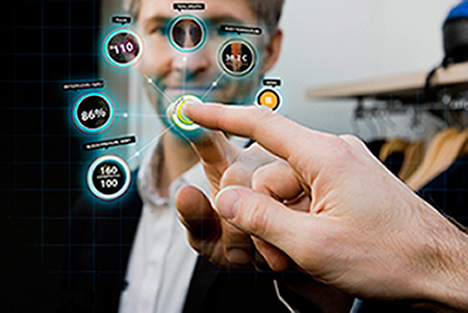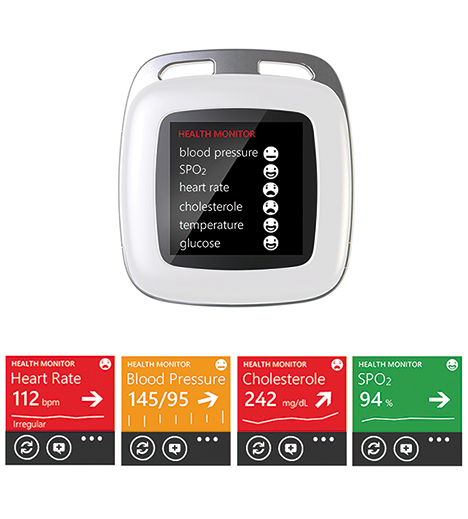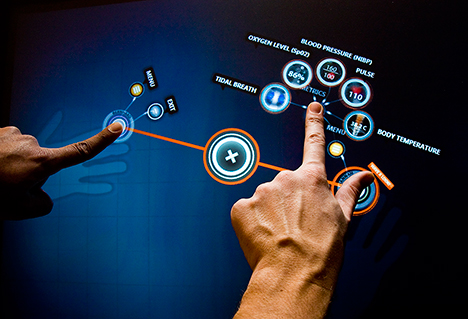

"After over 40 years of pioneering work in the Life Science industry, a multidisciplinary design team at Ergonomidesign put together their take on the future for the Health Care industry. Their challenge was to envision the future and develop possible solutions for the world to test, use and reflect on. The outcome has generated many discussions, both in the Design and Life Science industries as well as with politicians and policymakers in the European Union.
This article describes how Ergonomidesign developed a vision of the future for Life Sciences and how this served as a guide as their designers prototyped how we might manage our own health and interact with doctors, family and other medical professionals and services in the year 2015.
An Integrated Future of Health Care in the Year 2015
Our aim was to illustrate the body as a container of biometric data. The simple act of placing your hand on 'a table' or any other type of smart surface, triggered an enlightened experience, e.g. you will be able to share and compare your biometric data with people you trust, subscribe to personalized treatment software and also have easy and constant access to your health care professionals.
 |
| Reading biometric data on Surface |
 |
| miniME placed on Microsoft Surface displaying Hannah's biometrics. |
In late 2010, we introduced miniMe. This futuristic medical device is a personalized monitoring device offering patients and their network constant access to bio data. Core to the idea was that to support better interaction between people, devices and smart surfaces, it should be possible for all connected devices to be used separately or together with the Surface application. In concept, miniME uses biometric sensors placed on a patient's body to track health stats using RFID (Radio Frequency Identification) and NFC (Near Field Communication). It forwards their health stats through cloud computing so that patients, family members and HCPs can have constant access to data about their physical condition...

As experts in user-driven innovation with 40 years' of experience working with different types of users within the medical field, we are well aware that most of the proposed technologies are readily available on the market and that attempts are being made to bring them to life for consumers. Connected devices, networking and communicating through social media channels are all increasingly important and commonplace. In the future, we believe it will feel natural for us to use the same type of connected services for managing our health...
miniME recently won one of the world's most prestigious design awards, the IF product design award 2012. But as we write this article it has become clear to us that what we are the most proud of is the opportunity to increase the awareness among decision makers about how designers can significantly contribute in the development of health care services to increase the quality of life for people."

Using both software and hardware functioning prototypes, our vision of the future was finally possible to share. Our prototypes made it much easier for people to test, use and reflect on all parts of our suggested eco-system in an engaging way. We gave our audience the experience of actually being able to explore the future of health care...As experts in user-driven innovation with 40 years' of experience working with different types of users within the medical field, we are well aware that most of the proposed technologies are readily available on the market and that attempts are being made to bring them to life for consumers. Connected devices, networking and communicating through social media channels are all increasingly important and commonplace. In the future, we believe it will feel natural for us to use the same type of connected services for managing our health...
miniME recently won one of the world's most prestigious design awards, the IF product design award 2012. But as we write this article it has become clear to us that what we are the most proud of is the opportunity to increase the awareness among decision makers about how designers can significantly contribute in the development of health care services to increase the quality of life for people."

No comments:
Post a Comment